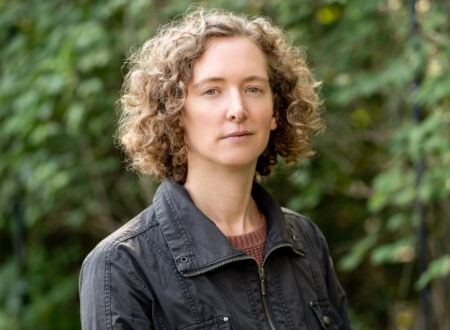A lot is happening in First Nations education. On April 10th, the Government of Canada introduced Bill C-33, the First Nations Control of First Nations Education Act. Over the course of the month, numerous First Nations leaders spoke out against the bill (just a few examples are in this video). It quickly became clear that although the Assembly of First Nations (AFN) National Chief Shawn Atleo had supported this initiative, most First Nations are deeply opposed to it. On May 2, the National Chief resigned.
Now Bill C-33 is on hold, and Canada is waiting to see what First Nations have to say about it.
What is the problem with Bill C-33 anyway? Why are First Nations so strongly opposed to it?
Well, First Nations are speaking for themselves, but as a lawyer and concerned citizen I can understand the opposition because of what this bill would do. The Harper government’s proposed First Nations Control of First Nations Education Act is a truly Orwellian name for an Act that decreases First Nations control of their own education systems, and dramatically increases federal control.
The illusion of “First Nations Control” is evident from the very beginning of the proposed Act, in the statement of purpose in s. 3:
3. The purpose of this Act is to provide for the control by First Nations of their education systems by enabling councils of First Nations to administer schools situated on their reserves, to delegate that power to First Nations Education Authorities or to enter into tuition or administration agreements in accordance with this Act.
The trouble is, First Nations already do all of those things. They already administer schools on reserve. They already delegate powers to their education authorities, and enter into tuition and other agreements. The Act does not give First Nations any new forms of control.
Instead, the existing forms of control that First Nations have over their children’s education would now become subject to intense federal regulation. Or as section 3 says, First Nations are “enabled” (in the Orwellian sense) to do the things they already do, but now only “in accordance with this Act”.
What the Act would actually do is impose heavy-handed federal control into First Nations education. It does that in 3 ways:
1. Bill C-33 sets substantive federal rules that would start determining the content of First Nations’ governance and operations of their education systems.
All of a sudden, First Nations would be expected to make their education systems comply with federal law, federal regulations, and federal policies issued by the federal department of Aboriginal Affairs (AANDC). The new rules would govern pretty much every aspect of education, from curriculum right down to busing and everything in between.
The last time the federal government was so actively involved in running First Nations education was residential schools. The department of Aboriginal Affairs has no education expertise. It does not know the needs of First Nations children. It has no accountability to First Nations communities. But apparently the federal government thinks it is in a better position to make the rules for First Nations education than First Nations themselves.
2. Bill C-33 backs up those federal rules with a federal enforcement system, including third party management of First Nations schools.
If a First Nation is allegedly outside compliance with those federal rules, the Act gives the federal government new powers of enforcement. Among other things the Minister of Aboriginal Affairs can require a First Nation to hire a “Special Advisor”, or appoint a “Temporary Administrator” who takes over the First Nation’s school.
There’s no suggestion of a hearing or opportunity to appeal – there are not even any terms set that would define when this would be allowed. Whenever the Minister (in his great wisdom, I suppose) decides it is best, he can appoint someone to take over a First Nations school. The position is called “temporary” but there is no time limit – other than whatever the Minister decides.
3. Bill C-33 inserts federal Ministerial discretion into numerous decisions about First Nations education.
The Act provides the federal Minister of Aboriginal Affairs with discretion in decision after decision. The Temporary Administrator is an example of what this means – the Minister decides on the basis of whatever the Minister wants. This is truly the epitome of the “federal government knows best” theme in the Act. Frankly, whoever is doing the deciding, peppering a law with this kind of blanket discretion is also corrosive to good governance, basic accountability and the rule of law.
Before making most of those decisions, the Minister would be required to consult with a so-called Joint Council of Education Professionals, which would include 1-4 members nominated by First Nations across the country (a problematic concept when hundreds of First Nations would be affected). But all decisions would remain with the Minister.
Follow the money
While the exact funding formula would follow in the regulations (not available yet), section 43 sets three requirements that the formula would be required to meet. It sounds like a positive step, especially in promising that funding must allow education service levels to be “comparable” to “analogous” provincial schools (as complex as that might be).
Unfortunately, what section 43 gives with one hand, section 45 takes away with the other. Section 45 says that the total funding envelope will continue to be set politically by the federal Cabinet. So if the envelope doesn’t provide comparable funding, it looks like First Nations kids are out of luck.
And if you thought you could sue Canada for discriminatory under-funding, think again. In section 46(2) of the Act, Canada has given itself a broad shield from liability for its own acts and omissions. That’s no accident. After years of under-funding in First Nations programs, some First Nations are turning increasing to the courts, and the courts are listening. Canada is responding – not by addressing the problem, but by generously immunizing itself from claims.
A step in the wrong direction
Change is certainly needed in First Nations education, and the status quo is unsatisfactory. But Bill C-33 would dramatically expand federal control over education at First Nations’ expense, assuming the Minister knows best.
It takes us further away from First Nations’ own inherent education jurisdiction protected in s. 35(1) of the Constitution Act, 1982.
It takes us further from Article 14 of the United Nations Declaration on the Rights of Indigenous Peoples under international law, which recognizes that “Indigenous peoples have the right to establish and control their educational systems and institution providing education in their own languages, in a manner appropriate to their cultural methods of teaching and learning.”
It takes us further from achieving First Nations’ vision for strong education systems that “give[s] our children the knowledge to understand and be proud of themselves and the knowledge to understand the world around them,” as stated in both Indian Control of Indian Education (1972) and First Nations Control of First Nations Education (2010).
So we should not be surprised that most First Nations find Bill C-33 unacceptable. There is another direction forward in First Nations education – one that builds the strength of First Nations own education systems. I hope Canada sees it.
This blog provides public information and comment, not legal advice. If you are seeking legal advice, please contact one of the OKT lawyers by phone or email.
By Judith Rae
Related Posts

OKT Podcast - Overview of the Reference on Bill C-92
Tuesday, February 20, 2024
We are excited to introduce the inaugural episode of the OKT podcast!
In this debut installment, Jesse Abell, Krista Nerland, and Judith Rae discuss the intricacies…
Read More...
First Nations: Did some of your members go to residential school?
UPDATED DEADLINE: JUNE 30, 2022
First Nations: Did some of your members go to residential school?
If yes, there is a class action underway now that may apply to you,…
Read More...
OKT proud to work alongside Inuvialuit on their landmark child and family services law
November 25, 2021; updated November 26, 2021
“For the first time in modern history, the Inuvialuit have passed a law for the Inuvialuit.” (NNSL Media, Nov. 24, 2021)
It’s…
Read More...

